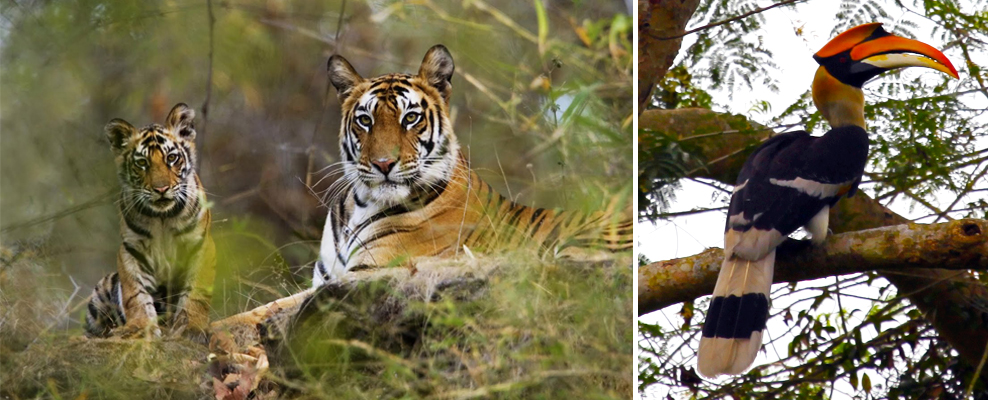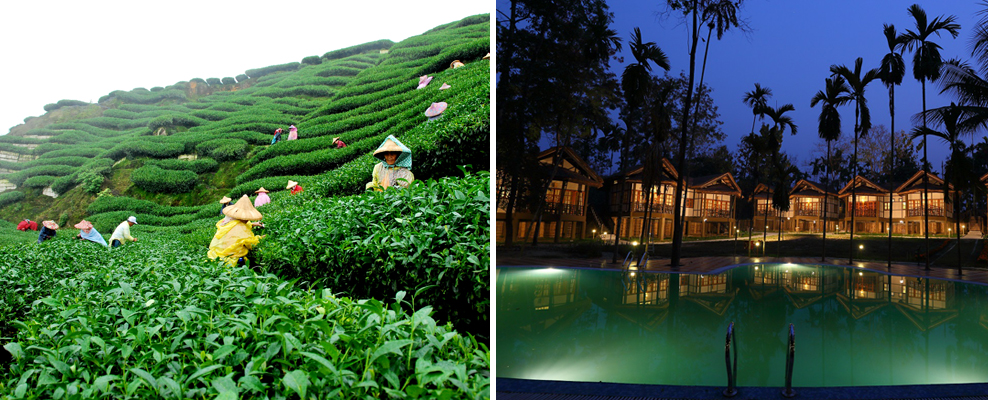The North-Eastern part of India, although dotted with pristine and beautiful places and full of history was not a common destination for travelers due to its inaccessibility, since one needed permits and still do to travel to most places. But in Assam, tourism has been given the prime focus, and the familiar name Kaziranga National Park, the home of the famous one-horned Rhinoceros is what immediately comes to mind. In 1985, Kaziranga was declared a World Heritage Site by UNESCO for its unique natural environment and has been the theme of several books, songs, and documentaries over the years. The sanctuary is a sprawling expanse of tall elephant grass, marshland, and dense, tropical foliage, criss-crossed by four major rivers, including the Brahmaputra.
As one looks up the history of Kaziranga, it is traced back to the year 1904, when Mary Curzon, the wife of the then Viceroy of India, Lord Curzon, happened to visit the area. Disappointed at failing to spot a single rhinoceros, for which the area was renowned, she managed to persuade her husband to take serious steps to arrest the alarming statistics which revealed how fast the species seemed to be dwindling. As a result, the Kaziranga Proposed Reserve Forest was created and severe penalties were imposed on poachers. Today, it boasts of two-thirds of the world’s population of the one-horned rhinoceroses. According to the census held in March 2015, the rhino population in Kaziranga is 2,401.
Kaziranga also has the highest density of tigers among protected areas in the world, and was declared a Tiger Reserve in the year 2006. Other wildlife includes elephants, wild water buffalo, and swamp deer. Kaziranga is also recognized by BirdLife International as crucial for conservation of birds and is the proud owner of innumerable and diverse birdlife due to its location right on the edge of the Eastern Himalayan Range.

However, in the last few years, the floods which rage across the sanctuary during the monsoons have become a matter of grave concern amongst wildlife preservation experts. When the Brahmaputra River overflows, it creates havoc amongst the wildlife leading to significant loss. The plight of the animals is heartrending though the Wildlife Trust of India, International Fund for Animal Welfare and the Forest Department of Assam strive to provide the best possible care. The loss of lives is tremendous and inevitable since most of the terrified and absolutely traumatized animals cannot brave the fury of the floods and swim to safety. Those who manage to reach the southern part of Kaziranga survive and go back after the water recedes.
Standing tall and proud in the Golaghat and Nagaon districts of the state of Assam, Kaziranga is only a five hour drive from Guwahati. The soothing, fresh green fields enhanced with wild flowers as we pass by on our way to Kaziranga is a treat to our tired eyes after the parched, dusty weather in Delhi. Our destination is none other than the IORA, Kaziranga Jungle Retreat located just off National Highway 37.
As we near Kaziranga, we catch a glimpse of the lush green tea gardens, a welcome sight. Soon we drive into the lane leading to the resort and are ushered into the serene and comfortable surroundings. The property, with its landscaped gardens, seemingly almost a small tea garden, is perfect for a restful as well as an eventful holiday. I would most certainly recommend IORA to visitors for it is a blend of the tranquil ambience customary to most places in Assam as well as the comforts of modern amenities. The warm hospitality of the staff made our stay very relaxing.
Right from sipping an unusual cocktail with a touch of thinly sliced Bhut Jolokia (the world’s hottest chili) on the private balcony of our comfortable room to lounging lazily beside the swimming pool or enjoying a soothing massage in the luxurious spa, we enjoyed to the hilt.

Mundane winter evenings were brightened up with a warm bonfire and folk dances. Especially entertaining was the catchy beat of the Jhumur dance reminiscent of the tea gardens of yester-years. We could not resist joining the mesmerizing sway of the graceful and demure dancers. Snacks and beverages served in the lawns made it all the more perfect. Of course, the multi-cuisine restaurant Scarlet Flame and the particularly flattering restaurant Bhatbaan catering to the Assamese palate, provide utter bliss for food lovers. The souvenir shop had an amazing collection of the evergreen Assam silk items as well as cane and bamboo ones so famous in this part of the country.
Elephant and jeep safaris took us deep into the jungles, where we excitedly examined pug marks and had the good fortune to experience a rare sighting of a tiger. We were also terrified when accosted by a large herd of wild elephants as well as the incident of having had our elephant chased mercilessly by an irate rhino. Our eventful IORA experience left us craving for more and we plan to go back for many more visits!
